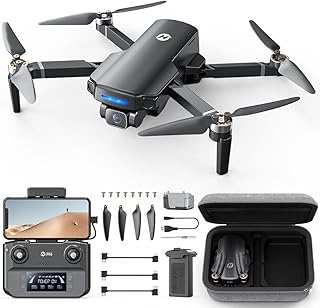The Impact of Drones on Wildlife and the Environment: A Double-Edged Sword
Drones, with their increasing popularity and diverse applications, are undeniably impacting wildlife and the environment. The effects are multifaceted, ranging from positive contributions to detrimental consequences, making it essential to understand the full picture.
Positive Impacts:
* Wildlife Monitoring and Conservation:
* Drones equipped with high-resolution cameras allow for efficient wildlife monitoring, including population counts, habitat mapping, and tracking endangered species.
* They provide a non-invasive approach, minimizing disturbance to sensitive animals.
* Drones can be used for anti-poaching efforts by detecting illegal activities and patrolling vast areas.
* Environmental Monitoring and Research:
* Drones can monitor deforestation, track wildfires, and assess air and water quality.
* They provide valuable data for research on biodiversity, climate change, and ecosystem health.
* Disaster Response and Relief:
* Drones can be used for search and rescue operations, delivering supplies, and assessing damage in disaster zones.
* This is especially valuable in remote or inaccessible areas.
Negative Impacts:
* Wildlife Disturbance and Stress:
* Drone noise and presence can disrupt animal behavior, leading to increased stress, altered breeding patterns, and even nest abandonment.
* This is particularly concerning for sensitive species like birds and mammals.
* Habitat Degradation:
* Drone crashes can damage sensitive ecosystems, particularly in fragile environments like wetlands or forests.
* The use of drones for agriculture, including spraying pesticides, can have negative impacts on soil and water quality.
* Air Pollution:
* Drones contribute to air pollution through their operation and manufacture.
* The use of drones for delivery and other commercial purposes can lead to increased traffic and congestion.
* Privacy Concerns:
* Drones equipped with cameras raise privacy concerns, especially when used for surveillance or monitoring without consent.
Mitigating Negative Impacts:
* Responsible Drone Operation:
* Implementing strict regulations and guidelines for drone operation, including designated flight zones and noise limits.
* Promoting responsible drone use through education and awareness campaigns.
* Technological Advancements:
* Developing quieter and more environmentally friendly drones.
* Implementing advanced sensors and algorithms to minimize wildlife disturbance.
* Collaborative Research and Monitoring:
* Encouraging interdisciplinary research to better understand the impact of drones on wildlife and ecosystems.
* Sharing data and best practices for responsible drone use.
Conclusion:
Drones offer significant potential for environmental monitoring, wildlife conservation, and disaster response. However, it is crucial to address the negative impacts they pose on wildlife and the environment. By promoting responsible drone operation, implementing effective regulations, and fostering collaboration, we can harness the benefits of drone technology while mitigating its risks. This balanced approach will ensure that drones contribute to a sustainable future for both humans and wildlife.


